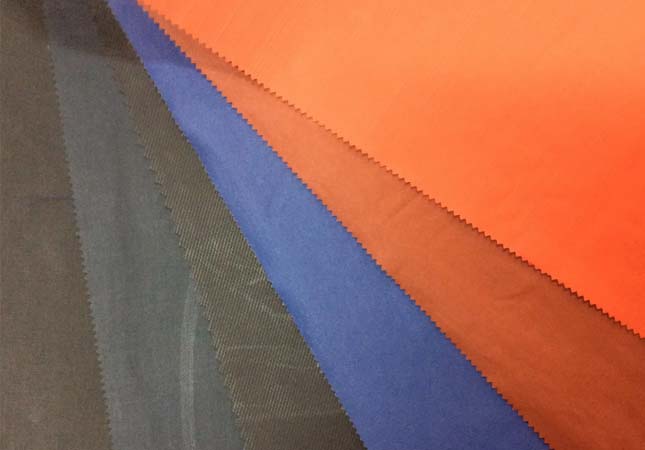Textile coating finishing agent, also known as coating glue, is a polymer compound that is uniformly coated on the surface of the fabric after the fabric being finished by the cloth cutting machine. It forms single or multi layers of film on the fabric surface through bonding effect, which can not only improve the appearance and style of the fabric, but also enable the fabric with the functions of waterproof, water pressure resistant, breathable and moisture-permeable, flame-retardant, anti-fouling, reflection.

Main Chemical Structures of Coating Materials
1. Polyacrylates(PA):
Polyacrylates is also called ac glue coating, and is one of the most common coating materials that are used currently. The fabric can be extra smooth with the aesthetics of fabric drape and even is windproof after coating with polyacrylates material.
PA white adhesion glue coating is also a kind of PA coating material, is to coat a layer of white acrylic resin on the fabric surface to increase the covering rate of the fabric surface, making it opaque and making the fabric surface color more vivid.
PA silver glue coating, that is, coating a layer of silver colored glue on the fabric surface, so that the fabric has the functions of shading and radiation protection, which is commonly used for curtains, tents, and clothing.
2. Polyurethane(PU):
It is a coating material that makes the fabric full of elasticity and the surface has a feeling of film after coating.
The PU white glue coating material is to coat a layer of white polyurethane resin on the fabric surface, is fundamentally the same as the PA white glue, but with the difference of plump feeling and the elasticity of fabric, and the PU white glue coating fabric is firmer than PA white glue coating fabric.
PU silver glue coating has the same basic functions as PA silver glue coating. However, PU silver-coated fabrics have better elasticity and fastness than PA silver glue coating material, which is a better choice for fabrics such as tents that require strong water pressure.
1. Polyvinyl Chloride (PVC):
Polyvinyl chloride is made of fiber cloth, glass cotton cloth and chemical fiber cloth as the base cloth, and a series of special coating treatments. PVC is mainly featured by the functions of waterproof, flame retardant, mildew-proof, cold-proof and corrosion-proof (referred to as 3-proof cloth and 5-proof cloth); anti-aging; anti-ultraviolet; easy to clean; high temperature resistance (180 ℃), good thermal insulation, etc.
2. Silicone
Silicone coating, also known as paper feeling coating, is a kind of coating material especially for the thin cotton that are suitable for making due to the strong resilience and wrinkle resistance functions.
Development Directions
1. Environmental Protection & Energy Saving
With the gradual enhancement of people's awareness of environmental protection and the promulgation and implementation of ISO14000, environmentally friendly coating adhesives that can be entirely water-dispersed and have no solvent pollution during synthesis and application are the main directions of development at home and abroad.
In view of the global energy shortage, the development of energy-saving coating agents cannot be ignored.
2. Advance Special Functions
The products of coated fabrics are windproof, waterproof, moisture-permeable, down-proof, flame-retardant, shading and have the possibility of developing advance extra functions in the future with the continuous advancement of technologies. There will be more and more functional coating finishing treatment for enabling the coated fabrics of additional functions such as insulation, warming, antibacterial, soundproof, magnetic, conductive, flash, luminous and other functions.
For example, the Biochiton that was launched by Japan's Asahi Kasei Company, is the product that added chitin to the polyurethane coating. It is claimed to keep the body clean from sweating and has a certain health care effect.
It is believed that the coating technology will develop in a more and more refined and high-tech direction.




